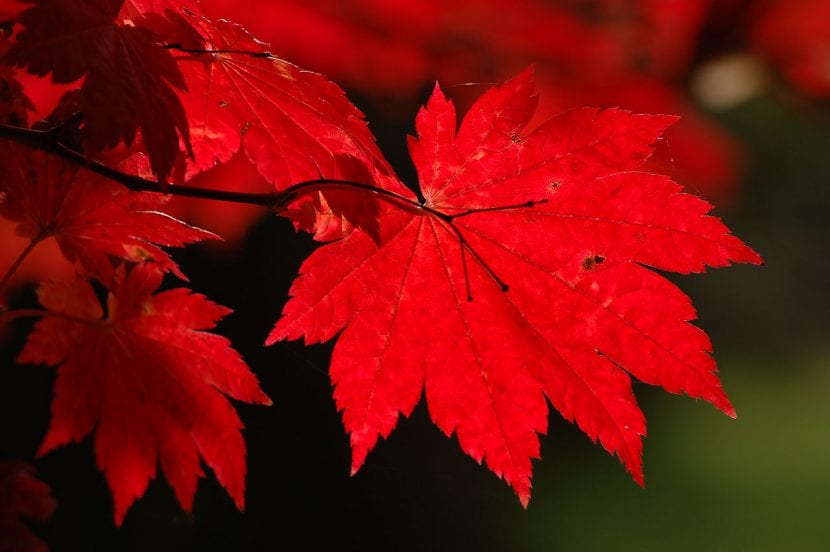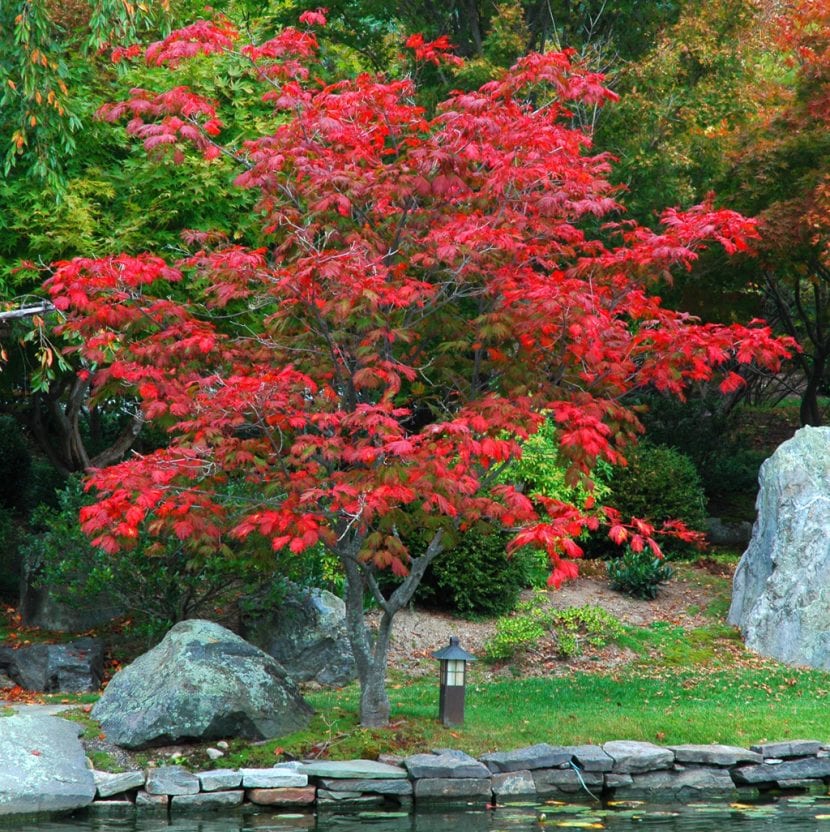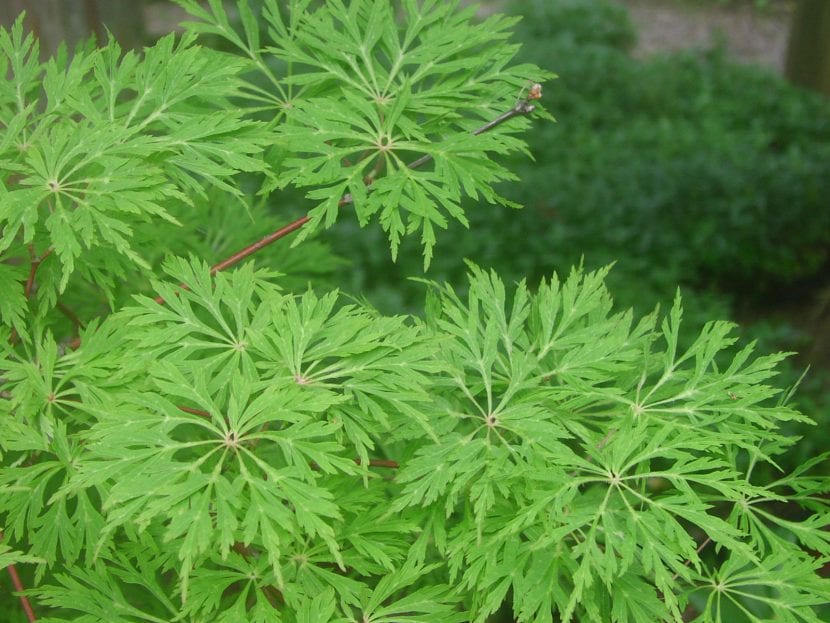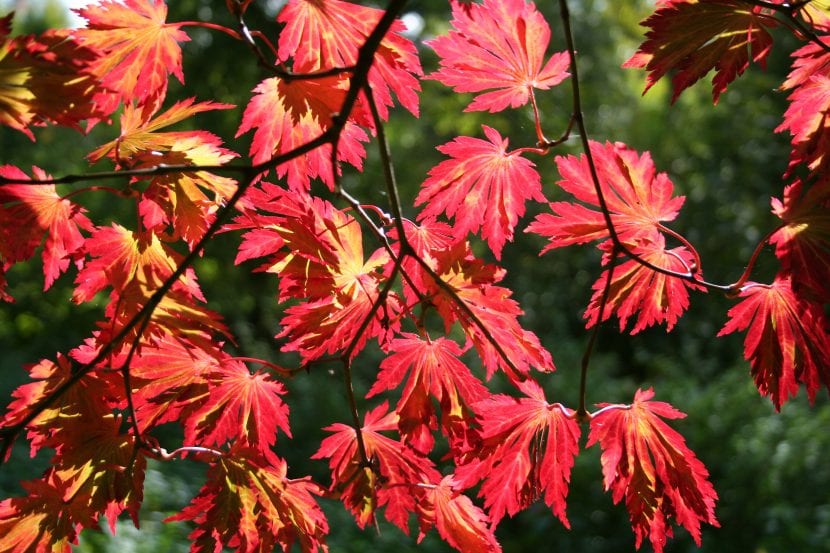
Acer japonicum 'Vitifolium'
You probably already know the Japanese maple, one of the most popular trees. Its size and elegance, as well as its ability to withstand significant frosts (it supports up to -17ºC without suffering any damage), make it one of the most beloved species. But there is another that can compete: the japan maple.
Also native to East Asia, this is a very pretty plant, requiring exactly the same care as the Acer palmatum. It is, and I am convinced, a tree or tree with which, surely, you will enjoy as much or even more. Why? For everything that I am going to tell you next.
What is the japonica maple like?

Image - Ghhf.org
Our protagonist is a tree native to Japan and South Korea known as Japanese plush maple or "full moon" maple. It is a deciduous tree that reaches a maximum height of 15 meters but rarely exceeds 10m, and whose trunk remains around 40cm in diameter.. The branches are thin and crowned by rounded leaves up to 15cm in diameter with 9-13 serrated lobes (rarely 7, which we do see in the japanese maple). During the fall they become quite a spectacle when they are dyed in colors ranging from orange to dark red.
The flowers appear distributed in hanging corymbs in early spring. They are 1cm in diameter, and have five dark purple-red sepals and petals. Once they are pollinated, they begin to produce the fruits, which are samaras that hang below the leaves that measure up to 32mm (25mm the wing and 7mm the nut or seed itself).
What care do you need?

Acer japonicum 'Green Cascade'
Image - amblesidegardens.com
You are liking this little plant, right? Well, if you dare to get a copy, provide it with the following care and you will see how beautiful it becomes:
- Location: outside, in semi-shade. This species is more sensitive to sunlight than Japanese maple, so you should put it in a very bright place but where the sun does not reach it directly.
- Soil or substrate: it has to be fertile, well drained and, most importantly, acidic. The pH should be 4 to 6. If you want to have it in a pot, use substrates that are already prepared for acidophilic plants; or mix akadama with 30% kiryuzuna if you live in a rather warm climate, such as the Mediterranean.
- Irrigation: it must be frequent. Usually it will be watered three or four times a week in summer, and every 3-4 days the rest of the year. Rain water should be used, without lime or acidified (pouring the liquid of half a lemon in 1 liter of water).
- Subscriber: from spring to summer you must pay it with fertilizers for acidophilic plants following the instructions specified on the package.
- Multiplication: by seeds in autumn-winter (they have to stratify cold for 3 months and then sow them in pots), for air layering o cuttings in spring. Cultivars by grafting.
- Planting / transplanting time: in spring, when the risk of frost has passed. If you have it in a pot, it will need a transplant every two years.
- Rusticity: resistant up to -17ºC.

Acer japonicum 'Aconitifolium'
Enjoy your tree 🙂.
I have a Japanese steel that the leaves are drying and we are in spring, what could be happening?
Hi Nolberto.
It may be that the wind is warm for him, or that he is watering himself with inadequate water for example.
These plants have a mountainous climate, living in acidic soils. In temperate-warm regions it is difficult for them to adapt.
En this link You have more information.
Greetings.